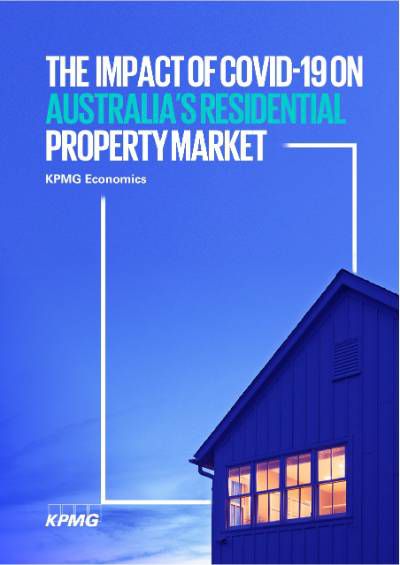In this study KPMG has sought to understand whether the COVID-19 pandemic has resulted in property prices being on a higher trajectory than would have been the case if COVID-19 had not occurred.
Since the beginning of 2021 a number of Australia’s capital cities have seen their residential property markets experience a significant upswing in prices. Various market commentators have suggested this robust price growth is likely to last for some time, while others have suggested residential property price increases will moderate after this initial spike. This report by KPMG Economics in Australia seeks to contribute to this discussion.
Key findings
Examining short term predictions and the longer term scenarios of the post-COVID-19 world.
- House prices in most capital cities were expected to enter a cyclical upswing at the start of 2020.
- The onset of the COVID-19 pandemic disrupted this cyclical upswing with house prices contracting in all capital cities except Canberra during the June quarter 2020.
- Government policy responses alleviated uncertainty regarding the direct and indirect impacts of COVID-19 on the property market. This, combined with the material decline in mortgage interest rates, has seen property prices rise dramatically in the past 6 to 9 months.
- The rises in residential property prices have been greater than we estimate would have occurred in the counterfactual no-COVID-19 scenario.
- It appears the short-term positive factors of lower mortgage interest rates have swamped the longer-term negative factors of lower population and price disequilibrium during this recent price spike.
- However, residential property price growth is expected to temper over the next 2 to 3 years as lower population growth, reversion back to equilibrium and higher mortgage lending rates weigh on property prices.
- Notwithstanding this moderating property price growth during 2022 and 2023, KPMG’s analysis shows that house prices are expected to be between 4 percent and 12 percent higher and unit values are expected to be between 0 percent and 13 percent higher than would have been the case in the absence of COVID-19.
The uncertainty associated with the coronavirus saw dwelling prices in most markets fall during 2020, despite the fact that market conditions at the beginning of the year were highly conducive to strong price growth.
Get in touch
Get insights, research and thought leadership in your inbox.
Related information
Economic insights and KPMG Australia services.




